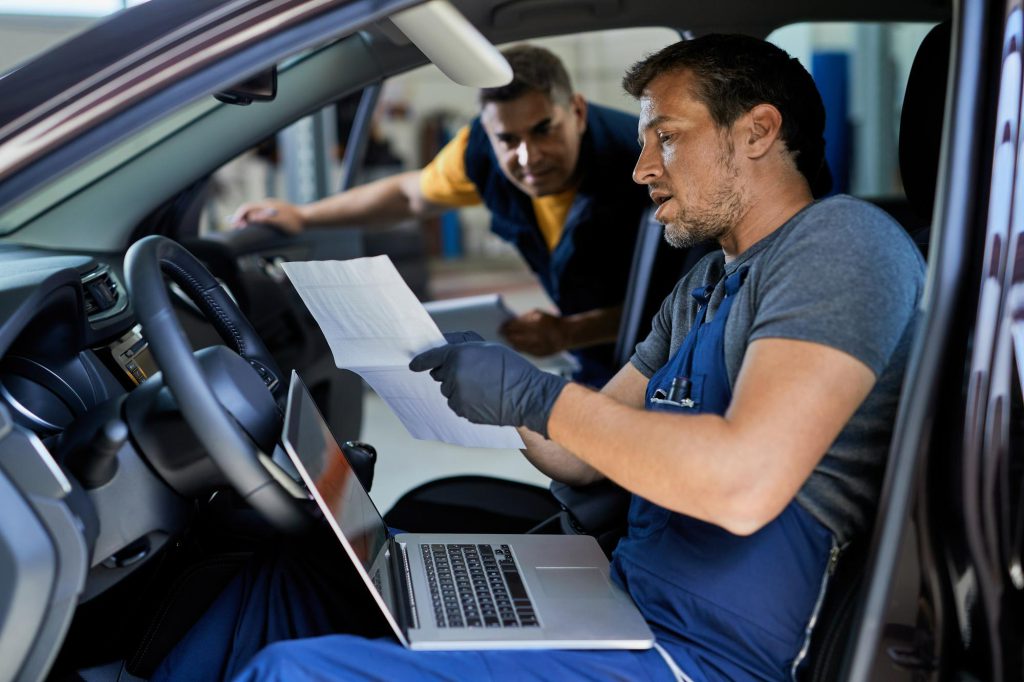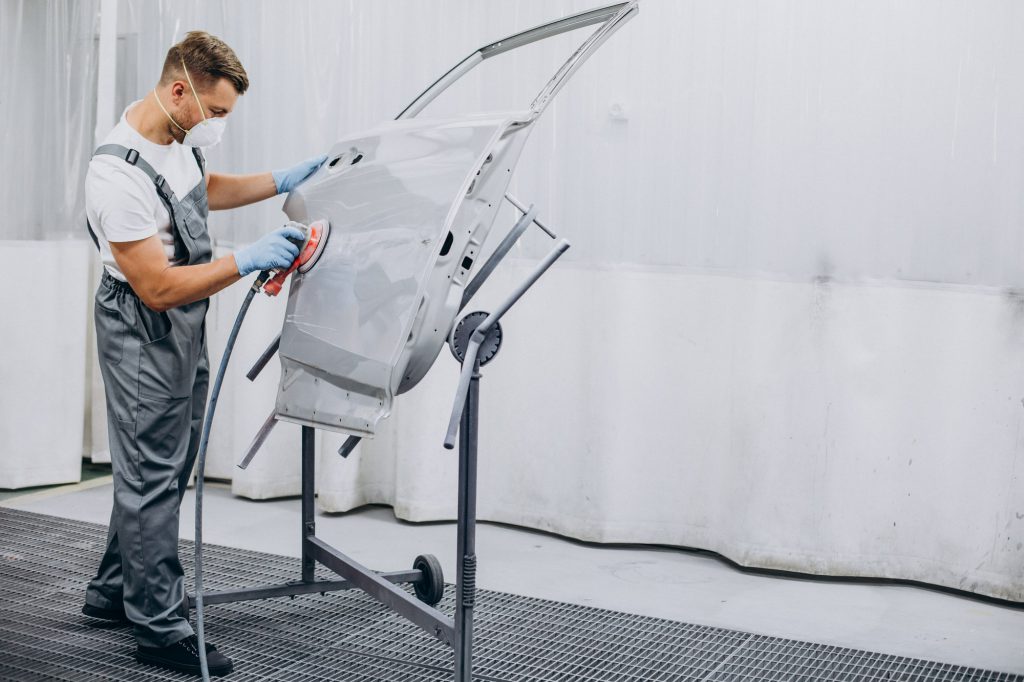
Car bodywork courses with Moodle
Creation and organization of educational courses in bodywork technology with Moodle
France / VET centre of The Bordeaux Chamber of trades
-The principle is to articulate the course resources with quizzes. Students can only access the quiz after having seen the course. There is a deadline for each quiz.
-The idea was to create an obligation for learners to participate in the courses and to come regularly to the platform to follow the content.
The 2019 health crisis and lockdowns forced to carry out the courses and the pedagogical follow-up in 100% distance mode (virtual class).
- At that time, the school did not have any collaborative tools deployed, except for Moodle and professional email addresses.
-The school set up groups on Discord as a place for exchange between trainers and students.
- The trainers carried out the pedagogical follow-up and the courses by sending emails to the students. The first results were catastrophic, very little feedback from the students.
- Mr. Mansencault then had the idea of using the school’s Moodle platform. He organizes these contents with the help of the pedagogical advisor.
-The school's ICT coordinator organized several webinars to train the trainers and encourage them to use Moodle.
- With Moodle, the instructor has access to all the students' logs and connections, which makes it possible to ensure rigorous follow-up and to quickly follow-up on students who do not participate.
- Mr. Mansencault followed up the students (by email / phone ...) very regularly at the beginning of the process, then students were interested in the game and came regularly on the platform to take the quizzes. Almost 100% of the students followed the courses during the lockdowns with this method.
- He organizes self-assessment quizzes to end a lesson sequence. If the results of the quiz are not good, the learner can retake the quiz for 1 more day, the time to reread the lesson and prepare.
-The quizzes can only be taken once and in a limited time.
Mr. Mansencault already had all these course materials in digital form. He was able to integrate them quickly into Moodle, but this was an opportunity for him to complete and enrich them in order to better correspond to a remote use:
-Rewriting texts / explanations.
-Search for appropriate visuals and videos.
It took about 15 days to set up the training courses on Moodle.
Car bodywork technology
- Adults retraining (25/30 years old)
- Learners (average age 19)
Create a rhythm between the course and the final self-evaluation.
-At the end of the experiment, Mr. Mansencault conducted a survey among the learners. He obtained 75% of responses.
-All learners were satisfied with the training system implemented with Moodle.
-He also received very good feedback from companies and parents who appreciated the quality of the educational continuity.
-Currently, Mr. Mansencault continues to use the training courses created on Moodle, as a complement to his face-to-face courses. He makes them available to learners for remediation, and he prefers to use these more dynamic PowerPoint course materials face-to-face. Moodle is a bit austere visually, too many blocks and not as interactive as PowerPoint. He uses the content enhancements made for Moodle to update these PowerPoint course materials.
-The pedagogical continuity with Moodle made it possible to complete the learners' program and bring them to the exam with the same level as in previous years (similar exam success rate)
-This concept of educational continuity through digital technology has allowed the trainer to develop new skills and add more rhythm to the training. At the moment, he has at his disposal a new teaching approach that he can use with the learners, in addition to the face-to-face courses, in case a learner needs to complete / review a notion or if he was absent during the course.
-The initial implementation of the project was in response to a specific health context (Covid lockdown). But the project was later deployed in a more "normal" training context. In any case, the design and articulation of the project can be applied in many other situations today.
The key factors of the project are:
-The playful construction of the courses
-The rhythm between the course materials (content inputs) and the self-assessment quiz (formative). Learners are free to take the end-of-chapter quiz whenever they want, especially when they feel ready. This freedom to take the quiz whenever they want is a motivating factor for learners. The self-correction option for quizzes is really great in Moodle, it allows for immediate feedback to the learners, which is what they expect.
-The device allows learners to learn at their own pace. They can go back to a lesson, reread a paragraph or watch a video as many times as they need to.
- Tutoring is also a key: allowing learners to send a message to the teacher when they have a question or are stuck on an instruction.
-Mr. Mansencault found that learners who had dropped out of face-to-face training (before the lockdown) really found themselves in this mode of training and got hooked on the system.






